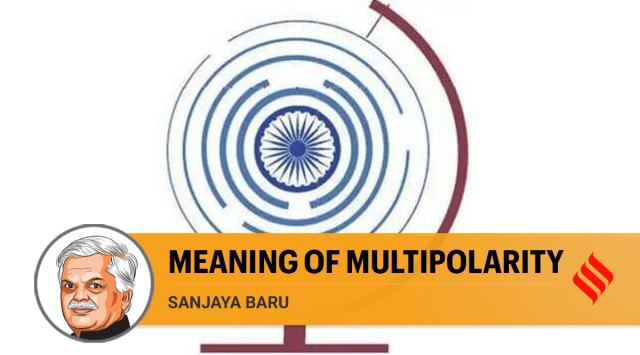
In a curious column (‘India’s multipolar myths’, May 24) dismissing as “myth” a widely held view that the emerging structure of power among nation-states is “multipolar”, namely distributed across more than one (unipolar) or two (bipolar) power centres, C Raja Mohan not only provides a misleading conceptualisation of multipolarity but also makes a questionable proposition about the Indian view of it.
Raja Mohan is wrong to imply that the concept of multipolarity suggests an “even distribution of power between major powers”. Nowhere in the literature on multipolarity or even of bipolarity in the Cold War era is there any presumption of even distribution of power. What is being suggested is that no single nation-state or two nation-states have the capacity to exert their power globally and hence have to work along with other, albeit lesser, powers.
Even American scholars have not always viewed the concept of multipolarity as “anti-American”. Consider, for example, Harvard historian Samuel Huntington’s famous characterisation of the post-Cold War distribution of power in the 1990s as “uni-multipolar”, rather than “unipolar”. Writing in Foreign Affairs (March 1, 1999) Huntington proposed: “My central thesis is that global politics has now moved from a brief unipolar moment at the end of the Cold War into one or perhaps more uni-multipolar decades on its way toward a multipolar twenty-first century.”
Following Huntington’s characterisation of the 1990s, I have argued elsewhere (‘The Geo-economics of Multipolarity’ in S Chinoy & J Panda, Asia Between Multipolarism and Multipolarity, 2020) that the global power structure after the trans-Atlantic financial crisis of 2008-09 was better understood as “bi-multipolar” since China had already emerged as a “geo-economic superpower”, even if not a military power.
Raja Mohan’s contention that the world is once again “bipolar” — US and EU vs China and Russia — underplays the space available for the articulation of national interests of “middle powers” such as India. In fact, even the proposition that the West and East have congealed into solid blocs, as during the Cold War, is subject to question with many nations in Europe, Latin America and Asia asserting their own national interests.
If, for this reason, Huntington viewed the late-1990s world as “uni-multipolar”, then we can certainly view the world today as “bi-multipolar”, without being accused of any anti-Americanism!
Attempts to push India into a lonely corner, forcing it to make choices and enter into alliances have failed in the past, when it was a weaker and less developed nation. A stronger and more self-confident India cannot be expected to fall in line one way or another. India’s relations with the US, as indeed with China, Russia or any other nation, would be defined by her interests and values and not out of fear of anyone nor in favour of anyone.
The writer is former advisor to Prime Minister Manmohan Singh